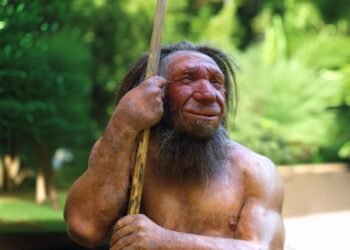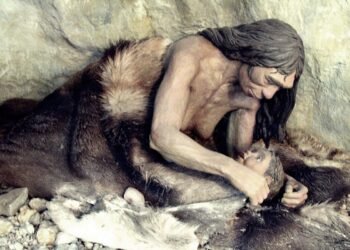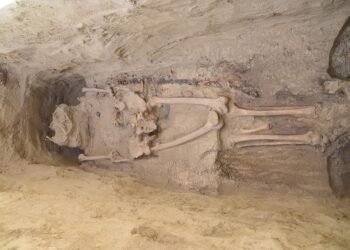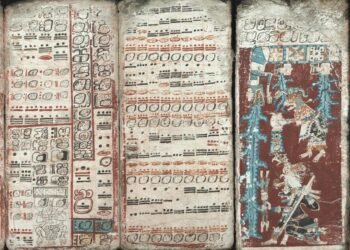Scientists from Western University have successfully confirmed the genuineness of a South American tsantsa, commonly known as a shrunken head, as actual human remains. This significant development contributes to the global effort to decolonize and safeguard Indigenous history while promoting understanding.
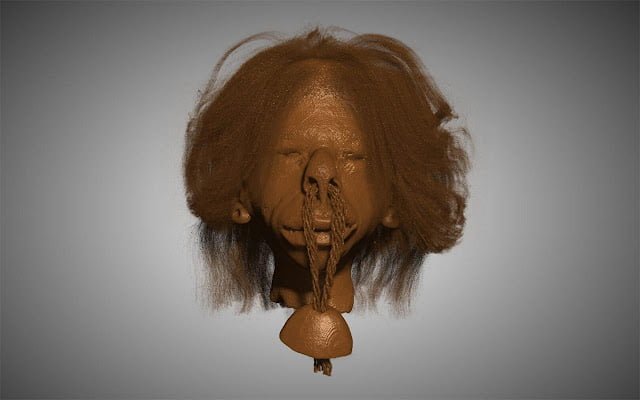
By utilizing clinical computed tomography (CT) and high-resolution micro-CT scans, the researchers have conclusively established that the tsantsa, presently housed at the Chatham-Kent Museum in Chatham, Ont., is an authentic specimen derived from a human being, rather than a counterfeit created using animal body parts or other substitutes often found in commercial reproductions.
This marks the initial stage in assessing the legitimacy of this particular artifact. CT scans generate two-dimensional images of body sections or parts, which are subsequently compiled and layered to construct three-dimensional representations
According to Lauren September Poeta, an Anishinaabe researcher and project associate at Western University’s Office of Indigenous Initiatives, this technique revolutionizes the field of archaeology by challenging its traditionally destructive nature.
She highlights that digital archaeology, including computed tomography, introduces a new level of credibility and revitalizes the discipline by reducing its invasive impact.
This innovative scanning method represents an important initial stride towards verifying the authenticity of tsantsas and aligns with the global movement towards Indigenous-led repatriation of human remains, artwork and archaeological objects presently held in various public and private collections worldwide.
The tsantsa that was examined in this study was donated to the museum during the 1940s by the Sulman family, who acquired it during a tour of the Amazon basin.
The original record of acquisition simply states that the tsantsa originated from “Peruvian Indians” in South America, without providing further details, which is not uncommon.
Tsantsas have already been recognized as valuable sources of information about history, culture, rituals, and identity.
Now that the authenticity of this particular tsantsa has been confirmed, researchers at Ecuador’s Universidad San Francisco de Quito, who were academic partners in the study, can collaborate with representatives from Ecuador’s Shuar and Achuar peoples, as well as those from Northern Peru, to determine the next steps.
Andrew Nelson, the chair of Western University’s Department of Anthropology, emphasized that the main focus of this study was authentication. He expressed the need for a better understanding of the entire process of tsantsa creation, as historical sources pertaining to it vary significantly.

Numerous historical accounts indicate that tsantsas were crafted with the intention of entrapping the soul within the preserved remains, achieved by sewing the eyes and mouth shut.
The practice involved shrinking the heads of defeated adversaries, with the belief that the victor would subjugate the captured spirit and prevent it from seeking vengeance for the enemy’s demise.
Poeta commented, “Tsantsas are a great representation of Indigenous history in South America, but the commercial legacy of shrunken heads highlights colonial networks all over the world.”
Working alongside local researchers in Ecuador and establishing connections with the Shuar and Achuar Peoples, Poeta aims to contribute to the process of decolonization.
While the study by Poeta, Nelson, and their collaborators successfully confirmed that the tsantsa consists of human remains, it remains unclear whether the practice of head shrinking served ceremonial or commercial purposes.
During the study, Poeta emphasized that the team was aware that they were examining actual human remains, particularly when analyzing the eyes and ears with high-resolution micro-CT scans.
“If vine materials were used to seal the eyes and the lips, it would likely identify the tsantsa as ceremonial, but if a more modern, cheaper thread was used it is more indicative of commercial interests when it was being made,” said Poeta.
On the other hand, Nelson identified the hair as a determining factor. The stitching utilized to close incisions, as well as the examination of the eyes and lips, can only be conducted with critical precision through micro-CT scans.
“You can see the individual skin layers on the clinical CT scan, but on the micro-CT scan you can actually see the individual follicles, and it becomes really clear what’s going on,” explained Nelson.
However, the researchers acknowledge that they cannot ascertain the specific details and ultimate purpose of the shrunken head’s creation until further tsantsas—both confirmed as ceremonial and suspected as counterfeit—are thoroughly exami
“We always work respectfully and intentionally with the subjects of our research, and we look forward to working with our Ecuadorian colleagues, including the Shuar and Achuar, to guide any future work,” said Poeta.
The findings were published today in the high impact journal PLOS One: Lauren September Poeta et al, Correlative tomography and authentication features of a shrunken head (tsantsa), PLOS ONE (2022). DOI: 10.1371/journal.pone.0270305



